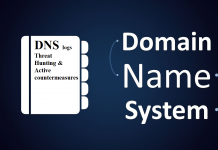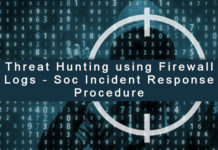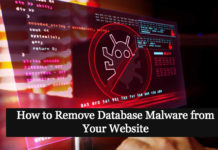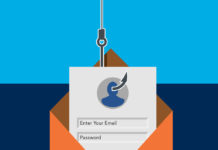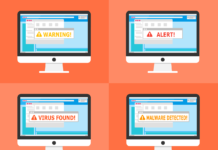A professional appearance starts with a polished address. Using outdated handles like “[email protected]” can hurt business credibility. Custom domains, such as [email protected], create trust and legitimacy.
Modern systems offer cloud efficiency and stronger security. Free providers often lack proper DMARC policies, leaving data vulnerable. Reliable services like GoDaddy guarantee 99.9% uptime, ensuring smooth operations.
This guide explores simple methods to transition seamlessly. Discover how to maintain professionalism while upgrading your communication tools. The right approach saves time and enhances productivity.
Why Email Migration Matters for Your Business
Your digital identity shapes how clients perceive your business. A custom domain like [email protected] builds trust instantly. In fact, 72% of prospects judge companies based on their email address.
Professionalism and Brand Image
Generic addresses (e.g., @gmail.com) lack credibility. A branded domain signals legitimacy. Microsoft 365 elevates this further with ad-free portals and full-text search.
Improved Email Deliverability
Free providers often skip DMARC policies, risking spam filters. Proper setup ensures marketing messages reach inboxes. Cloud-based servers offer 99.9% uptime—critical for reliability.
Enhanced Features and Efficiency
Modern tools streamline workflows:
- Integrated calendars and contacts sync seamlessly.
- Cloud storage outperforms on-premises servers for accessibility.
- 24/7 support and spam filters (e.g., Microsoft 365) reduce downtime.
Upgrading isn’t just about a new email address—it’s about securing data and boosting productivity.
Understanding Email Migration: Key Concepts
Modern businesses rely on efficient communication tools. Knowing the fundamentals ensures a smooth transition to better systems. This section breaks down critical terms and scenarios.
What Is Email Migration?
It’s the process of moving data between systems. This includes contacts, calendars, and mailbox content. Businesses often switch to Exchange Online or cloud platforms for scalability.
Hybrid setups allow simultaneous use of on-premises and cloud servers. This flexibility helps larger organizations transition gradually.
Common Email Migration Scenarios
Popular transitions include:
- Gmail to Google Workspace (for integrated tools).
- On-premises Exchange to Microsoft 365 (for cloud accessibility).
IMAP suits basic transfers, while Exchange protocols handle complex data. PST files often cause delays in cross-platform moves.
Servers and Cloud Solutions Explained
On-premises servers require physical maintenance. Cloud alternatives like Microsoft 365 cut costs and offer remote access.
Key advantages include:
- Automatic updates and 24/7 support.
- Reduced downtime with 99.9% uptime guarantees.
Preparing for a Smooth Email Migration
Preparation is key to avoiding headaches during system upgrades. A well-planned move ensures no data is lost and minimizes downtime. Follow these steps to set the stage for success.
Assessing Your Current Email System
Start by auditing your account setup. Verify DNS records and ensure service status is active. Missing credentials or misconfigured system settings can delay the process.
Key checks include:
- User permissions and admin access levels.
- Storage limits and attachment sizes.
- Third-party app integrations (e.g., CRM tools).
Backing Up Your Data
Never skip backups. Compare manual PST exports to automated cloud solutions. The table below highlights the pros and cons:
| Method | Pros | Cons |
| Manual PST | Full control over files | Time-consuming; risk of corruption |
| Automated Tools | Fast; error logging | Requires license fees |
Choosing the Right Migration Tool
Select a migration tool that fits your scale. For example, GoDaddy’s Managed Services migrated 200 mailboxes in under 48 hours. Look for:
- Batch processing for large account volumes.
- Real-time error alerts.
Note: Microsoft 365’s cutover method caps at 150 mailboxes—plan accordingly.
Types of Email Migration Methods
Selecting the right transfer method impacts efficiency and downtime. Each approach suits different scales and priorities, from speed to minimal disruption. Below are the three primary types businesses use.
Cutover (Express) Migration
This method moves all mailboxes at once, ideal for small teams. Microsoft recommends it for under 150 users, though it supports up to 2,000. The entire process typically completes within 48 hours.
Pros:
- Fastest time-to-completion.
- Minimal technical complexity.
Note: Requires scheduling downtime, as access halts during the transfer.
Staged Migration
Larger organizations (e.g., a 5,000-mailbox financial firm) use this phased approach. It moves groups incrementally, reducing strain on systems. Users retain access to old accounts until their turn comes.
Key features:
- No hard cutoff time.
- Compatible with older Exchange 2003/2007 systems.
Warning: Legacy versions lack modern security updates.
Hybrid Migration
For businesses needing both cloud and on-premises solutions, Hybrid bridges the gap. It syncs Exchange 2010+ servers bidirectionally, allowing gradual transitions.
Advantages:
- Zero downtime for users.
- Flexibility to scale cloud adoption.
Example: A retail chain might keep HR on-premises while migrating sales to the cloud.
Step-by-Step Guide to Email Migration
A smooth transition requires careful execution at every step. Breaking the migration process into phases reduces risks and ensures data integrity. Below is a foolproof method to upgrade systems without hiccups.
Step 1: Verify Domain Ownership
Start by confirming control over your domain. Most providers need a TXT record added to DNS settings. This proves you own the address and prevents unauthorized transfers.
Tip: Use screenshots from your registrar’s portal for reference. Missing this step halts the entire process.
Step 2: Grant Necessary Permissions
Admin-level access is crucial for bulk changes. Assign roles like account editor or global admin in Microsoft 365. User-level permissions limit transfer capabilities.
For larger teams, delegate tasks to avoid bottlenecks. Clear hierarchies streamline approvals.
Step 3: Use Migration Tools
Leverage built-in tools like Microsoft FastTrack for bulk processing. These automate transfers, reducing manual errors. Key features include:
- Real-time progress tracking.
- Error logs for troubleshooting.
Step 4: Update DNS Settings
Modify MX records to point to the new provider. Incorrect entries delay delivery. Test changes with tools like MXToolbox before finalizing.
Note: Propagation takes up to 48 hours—plan downtime accordingly.
Step 5: Monitor and Finalize
Post-transfer, audit all accounts for missing data. GoDaddy recommends a 72-hour review period. Use a 12-point checklist:
- Verify sent/received folders.
- Test calendar syncs.
- Confirm spam filter functionality.
Address gaps immediately to complete the migration process successfully.
Migrating to Microsoft 365: Best Practices
Transitioning to Microsoft 365 unlocks advanced collaboration and security features. Whether moving from Exchange or IMAP-based systems, these strategies ensure a smooth data migration.
Using Exchange Online
Exchange Online simplifies cloud-based mailbox management. It’s ideal for businesses needing real-time sync and enterprise-grade security. Compare deployment options:
- Exchange Online standalone: Lower upfront costs, automatic updates.
- Hybrid deployment: Best for gradual transitions (e.g., retaining on-premises HR systems).
Tip: Use PowerShell scripts to migrate mailboxes in batches. For example, New-MigrationBatch automates user transfers with error logging.
IMAP Migration for Non-Exchange Systems
Moving from Gmail or other IMAP providers? Note these limitations:
- No calendar or contact transfers—use third-party tools for these.
- Average transfer rate: 500MB per user daily. Schedule large moves overnight.
Enable IMAP access in source accounts beforehand. Missing this step delays the entire data migration.
Handling PST Files
PST files often store critical archives. Microsoft’s PST import tool supports network drives or direct uploads. Key considerations:
- Split PSTs exceeding 50GB to avoid timeouts.
- Map network drives for faster bulk imports.
Partner networks help with complex migrations, offering dedicated support and reduced downtime.
Migrating to Google Workspace: A Simplified Approach
Switching to Google Workspace boosts productivity with seamless collaboration tools. Whether moving a small team or thousands of users, a structured plan ensures data integrity and minimal disruption.
Setting Up the Data Migration Service
Begin in the Google Workspace Admin Console. Navigate to Data Migration and select source platforms like Outlook or IMAP. The data migration service supports both classic and newer protocols.
Key steps include:
- Generating a CSV template with 20 fields (e.g., account name, old server URI).
- Verifying role permissions to avoid transfer failures.
Bulk vs. Single User Migration
For large teams, bulk transfers save time. Compare methods below:
| Method | Best For | Limitations |
| Bulk CSV | 500+ users | Requires precise formatting |
| Single User | Testing or small teams | Time-consuming for scale |
Common Pitfalls to Avoid
Top errors during Google Workspace transfers include:
- Incorrect URI paths (e.g., typos in server addresses).
- Role-based account restrictions blocking imports.
Case Study: A 1,000-user move from Outlook.com succeeded by pre-testing 10% of emails. Post-migration reports flagged 5% errors—all resolved within 24 hours.
Essential Tools for Email Migration
Choosing the right software can make or break your transition. The best tools automate tedious tasks, reduce errors, and speed up the process. Below are top solutions for seamless transfers.
Microsoft FastTrack
FastTrack offers specialist support for large-scale moves. Its SLA guarantees 24/7 assistance with a 4-hour response time. Key features include:
- Batch processing for 500+ accounts.
- Real-time progress dashboards.
Tip: Ideal for Exchange Online migrations—saves 40% manual effort.
Google Data Migration Service
Built into Google Workspace, this migration service handles IMAP and Outlook transfers. It logs errors like code “ERR_IMAP_CONNECTION” for quick fixes.
Limitations:
- No calendar sync for IMAP sources.
- Daily 500MB cap per user.
Third-Party Migration Tools
For complex needs, external software like BitTitan or AvePoint fills gaps. Compare top options:
| Tool | Best For | Cost (Annual) |
| BitTitan | Multi-platform moves | $1,200+ |
| AvePoint | Enterprise security | $2,500+ |
Case Study: A mid-sized firm cut downtime by 60% using BitTitan’s automation.
Select a provider based on mailbox volume and budget. Smaller teams may prefer built-in tools, while enterprises benefit from white-glove migration services like GoDaddy’s.
Conclusion
A successful email migration hinges on three core elements: preparation, the right tools, and consistent oversight. Skipping any step risks data loss or downtime.
Post-migration, avoid the “set and forget” trap. Verify account settings, test spam filters, and update DNS records. GoDaddy’s managed services handle these tasks, ideal for busy teams.
Quick checklist:
- Audit sent/received folders.
- Confirm calendar syncs.
- Review security protocols.
Need help? Explore free consultations to streamline the process. Pro support ensures a flawless upgrade.






